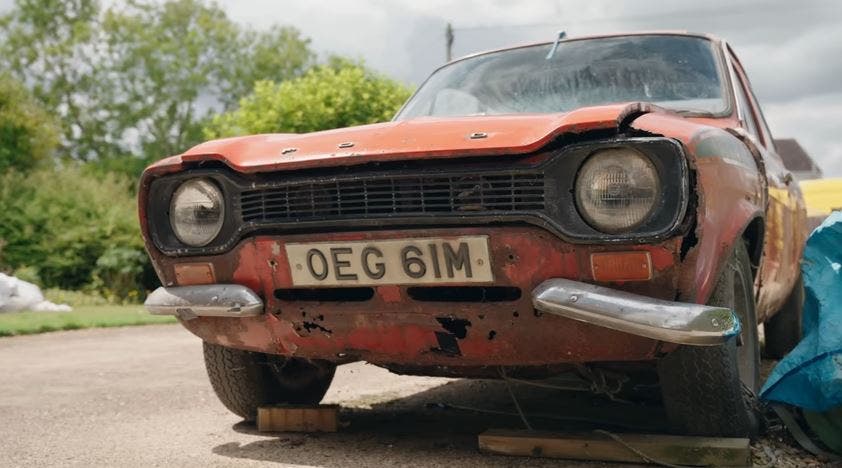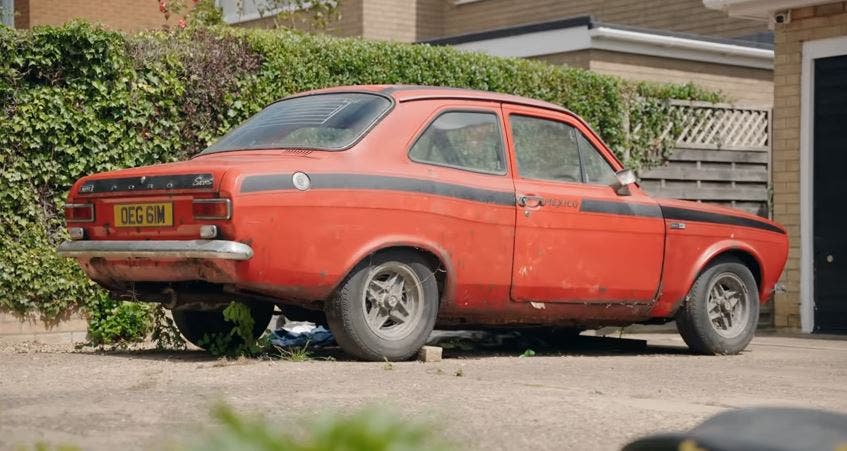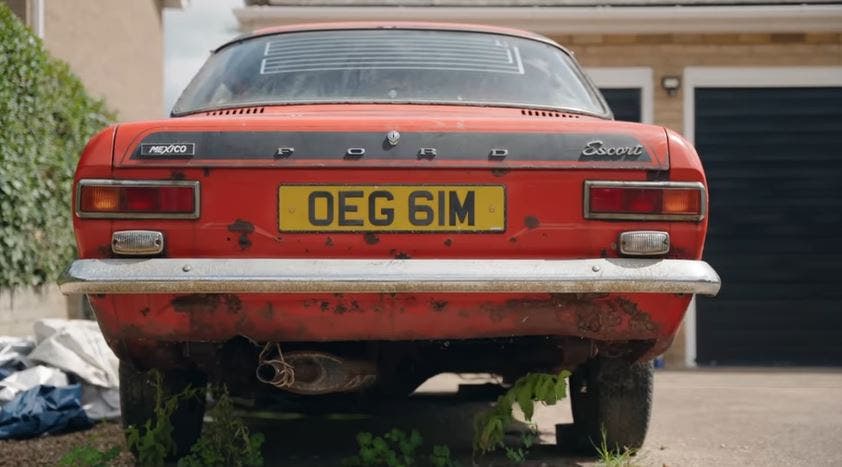Just outside a quiet home in Lincolnshire, a forgotten piece of automotive history has resurfaced. It’s not just any car, but a Ford Escort Mexico, a model that once embodied affordable performance with genuine rally DNA.
Purchased nearly new in 1975 and parked for good in 1981, this Escort has remained in the same family ever since, untouched and unrestored. After spending years first in a garage and then under a makeshift shelter, the car has finally been rediscovered, remarkably original despite the passage of time.
For its owner Chris, this Ford was far more than simple transportation. It was his very first performance car, one he briefly drove at club rallies before adapting it to daily family duties. Back in 1975, he paid £975, around $1,300 today, for the Escort Mexico, choosing it over sportier options like the MGB GT or the Datsun 240Z. It turned out to be a smart decision.

The Mexico was designed to celebrate Ford’s victory in the grueling 1970 London-to-Mexico World Cup Rally, and it carried much of the same spirit into a road car meant for enthusiasts. Under its modest hood sat the sturdy 1.6-liter Kent engine, paired with the reinforced chassis, brakes, and structure borrowed from the rally-ready RS1600, but without the expensive Cosworth engine. The result was a mechanically simple yet brilliantly balanced car.
Though not the fastest, 0 to 60 mph in about 11 seconds and a top speed of 100 mph, it offered sharp steering, engaging rear-axle dynamics, and disc brakes up front, all tuned for an exhilarating driving experience.

When Johnny Smith from The Late Brake Show asked Ford expert Russell Lord to inspect the car, Lord was impressed by its authenticity. Despite the rust, the body remains straight, the doors still align well, and the engine surprisingly turns freely after decades of neglect. Chris admits he cannot fund a full restoration, so he plans to sell the Escort to someone with the passion and resources to bring it back to life.

This Escort Mexico offers much more than just mechanical heritage. After more than 40 years in hiding, it stands as proof of why the Mexico earned its place among the most beloved “fast Fords”.
